How ‘reactivating’ floodplains along rivers can be a water solution for California
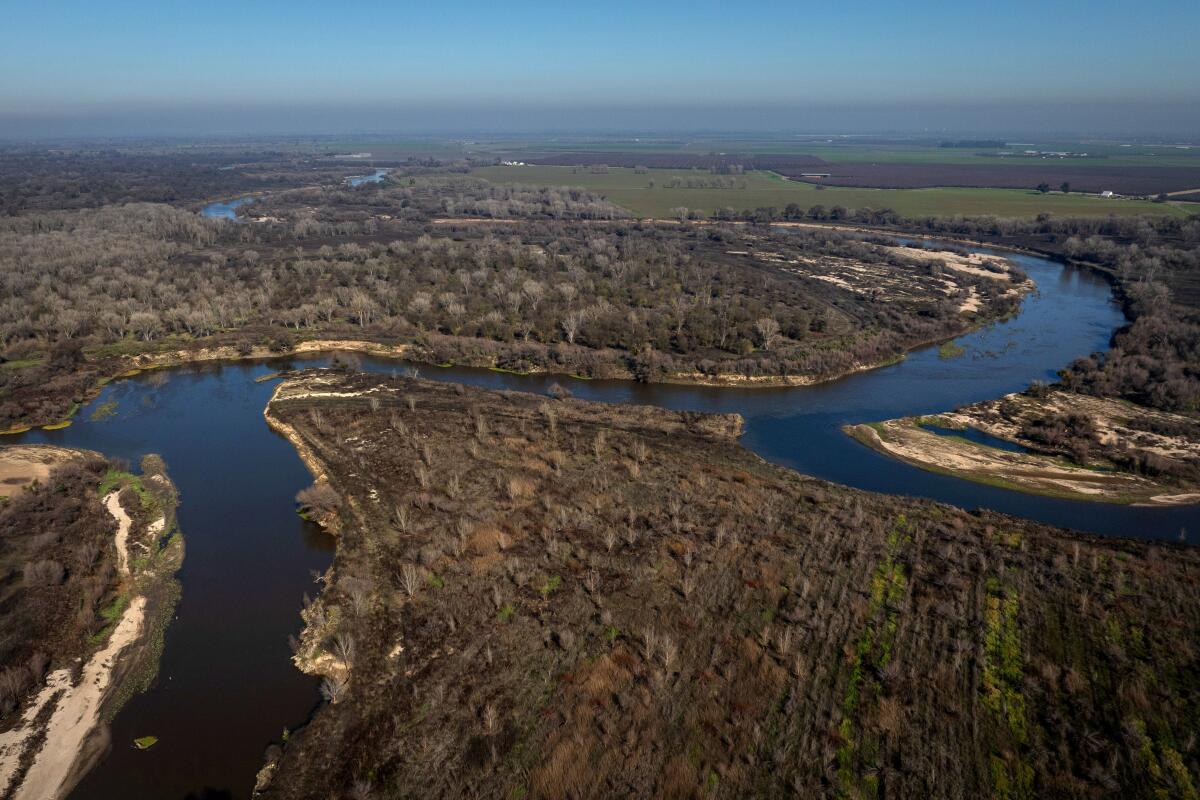
- Share via
Welcome to today’s edition of Boiling Point. I’m Ian James, a reporter covering water issues for The Times, writing the newsletter this week to fill in for my colleague Sammy Roth.
California has lost most of its natural wetlands as rivers have been cut off from their natural floodplains. And it’s pretty remarkable what can be achieved when rivers are given space to reconnect with floodplains.
I learned more about opening up spaces for rivers to roam while working on an article about floodplain restoration efforts in the Central Valley.
These types of projects have received broad-based support in recent years as an effective nature-based solution that can bring various interrelated benefits. They include: reducing the risks of flooding in vulnerable communities downstream; capturing and storing more water underground in aquifers; improving water quality; and helping to repair ecosystems.
That last point, the potential for healthier ecosystems, has many facets. And I’d like to share more of what I learned from biologists about how putting water back into floodplains can help fish and other species.
I took a trip last month to the Dos Rios Ranch Preserve, where a decade of efforts by the groups River Partners and Tuolumne River Trust have transformed farmlands into riparian forests and wetlands. By taking down berms and planting native trees and shrubs, they have restored the floodplain to a more natural state.
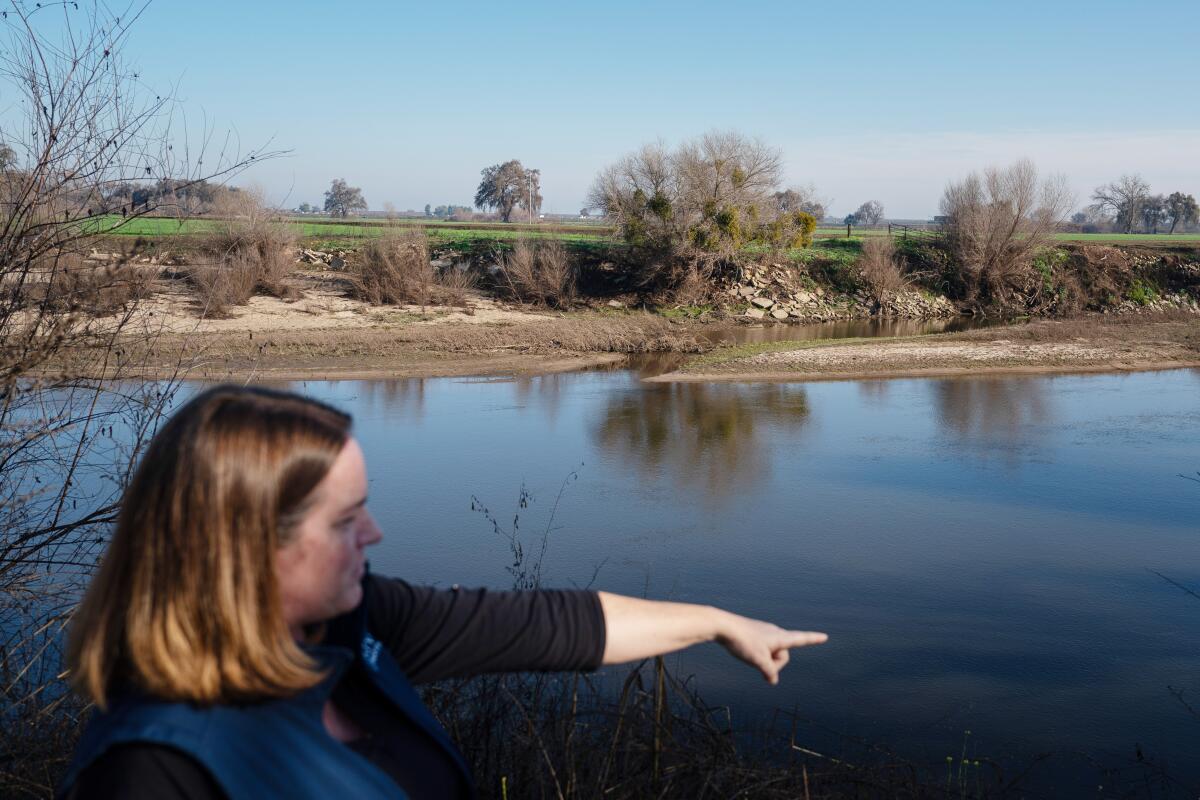
As a result of this work, which has been supported by federal, state and local agencies, the preserve will soon become a new state park.
Julie Rentner, the president of River Partners, led a tour of the preserve, including a grassy meadow that she called a salmon “nursery.” When the San Joaquin and Tuolumne rivers swelled with last year’s historic runoff, this area was filled with water up to 8 feet deep. And that brings the right conditions for insects and other tiny creatures that juvenile salmon feed on.
As water returns to this area in the coming years, Rentner said, the hope is that more juvenile Chinoook salmon will bulk up and help the struggling population grow.
“We’re learning more and more that the ecosystem on floodplains is critically important for salmon recovery,” Rentner said. “Those dynamics are what our wildlife and our ecology depends upon. You don’t have salmon if you don’t have meandering Central Valley rivers.”
While Dos Rios and other floodplain projects focus on restoring natural habitats, other different types of efforts involve conservationists working with rice farmers to flood agricultural land for part of the year to create habitats for fish and birds.
Biologist Jacob Katz, lead scientist for the group California Trout, explained how this is being done northeast of Davis in the Yolo Bypass, where he has been working on an effort called the Nigiri Project. He said flooding rice fields seasonally has created rich feeding areas for salmon and other fish, which he describes as “reactivation” of floodplains.
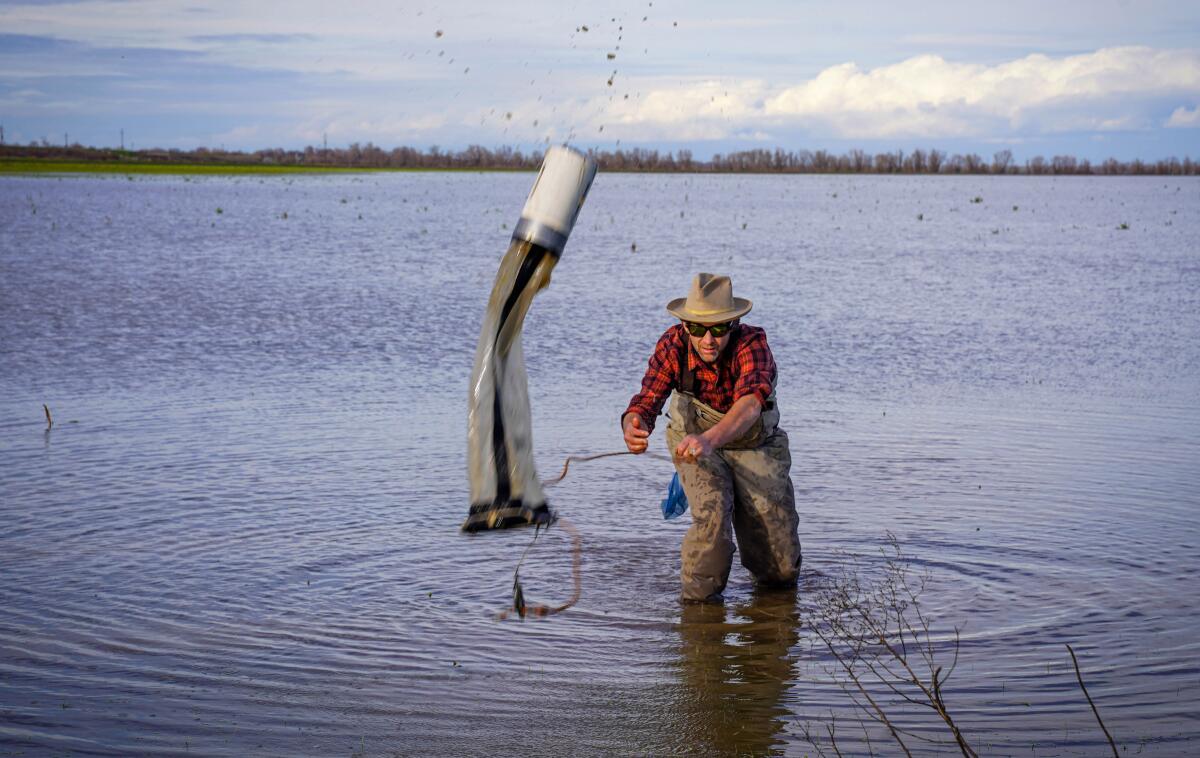
Katz, who describes himself as a “fish squeezer,” has been working on getting fish out onto flooded farmland since 2011, when he was a graduate student at UC Davis. He and other researchers quickly saw that “when you take a Sacramento River salmon and put it out into a mud puddle, a place that no one thought was salmon habitat, not only did they survive, but they thrived.”
A growing body of research shows that juvenile salmon grow rapidly when they have these kinds of opportunities to feed on flooded farmlands or other wetlands.
“We’re starting to understand what a river actually is,” Katz said.
For much of California’s history as a state, “we’ve thought that fish belong in the river and the river belongs in its banks,” Katz said. “And what the science has shown is that that’s just patently untrue, that the Central Valley was a vast mosaic of river channels and their connected floodplain wetlands, and that the fish really depend on the food that is produced in the productive, fertile wetland food webs.”
“A river is really the summation of the patterns created when the water flows through the landscape,” he said.
Now that Californians have a better understanding of how our river ecosystems work, Katz said, we have an obligation to integrate this understanding into how water is managed.
Chinook salmon populations in the Central Valley have been declining for a variety of reasons that go beyond the lack of floodplain habitats. Dams have prevented fish from reaching upstream spawning grounds, and salmon have also been affected by water diversions for farms and cities.
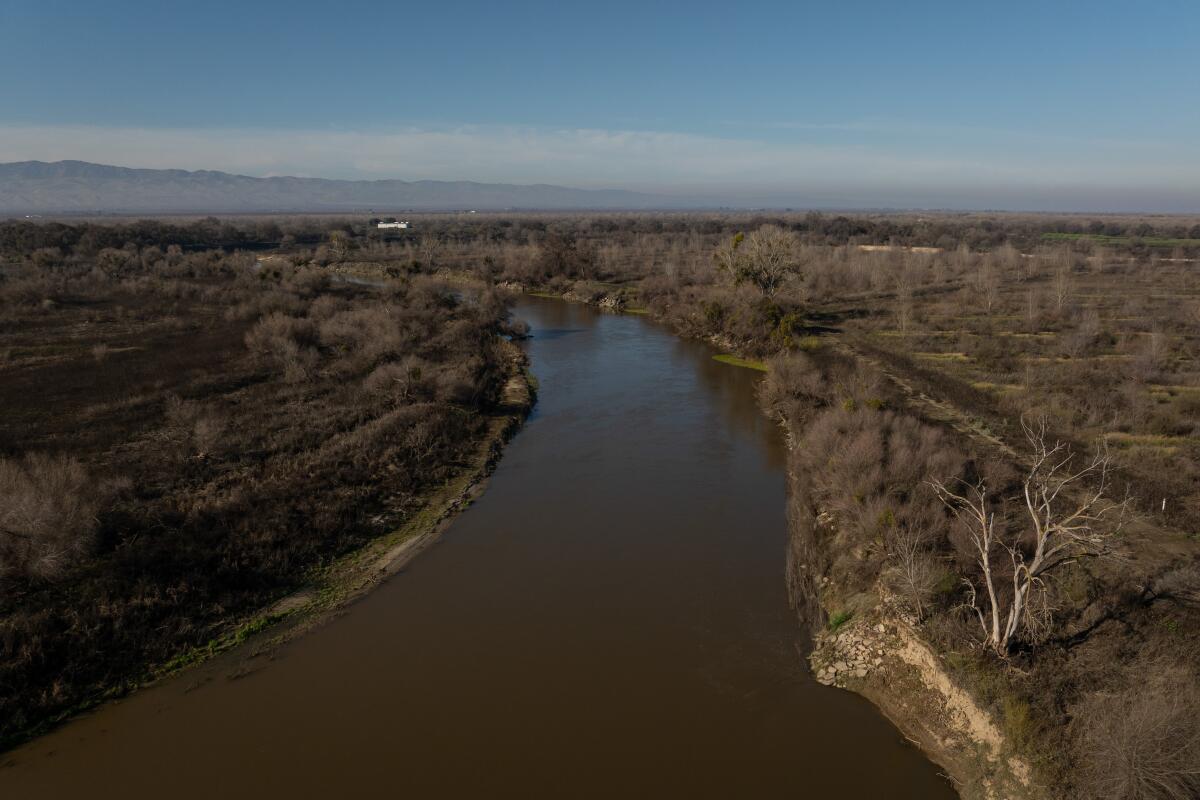
Katz said his work has shown that reginiting the “engines of natural productivity” on floodplains can go a long way, and that investments in these types of projects on a large scale hold promise for helping fish populations begin to recover. He said that means doing many more projects such as Dos Rios and the Nigiri Project.
“There really is an urgency,” he said, because without greater efforts, fish species from salmon to smelt could be lost in the coming years.
And one powerful way of helping fish, Katz said, is reestablishing the equivalent of big “puddles” on the flood plains.
“Let’s manage the water so that we keep puddles out there on the landscape long enough to approximate those engines of natural productivity, that are the means by which fish actually get the benefits,” Katz said. “What we’re giving those fish is a landscape they recognize, and when we do that, they respond so dramatically.”
On that note, here’s what else is happening around the West:
TOP STORIES
Heavy rain and flooding have hit many parts of California over the last year. And in the Owens Valley, the costs of storm damage continue to rise for the Los Angeles Department of Water and Power. My colleague Louis Sahagún reports that the toll has included a breach of the Los Angeles Aqueduct that occurred last year, as well as damage to systems designed to control dust on the dry bed of Owens Lake. A preliminary assessment estimated the costs at more than $100 million.
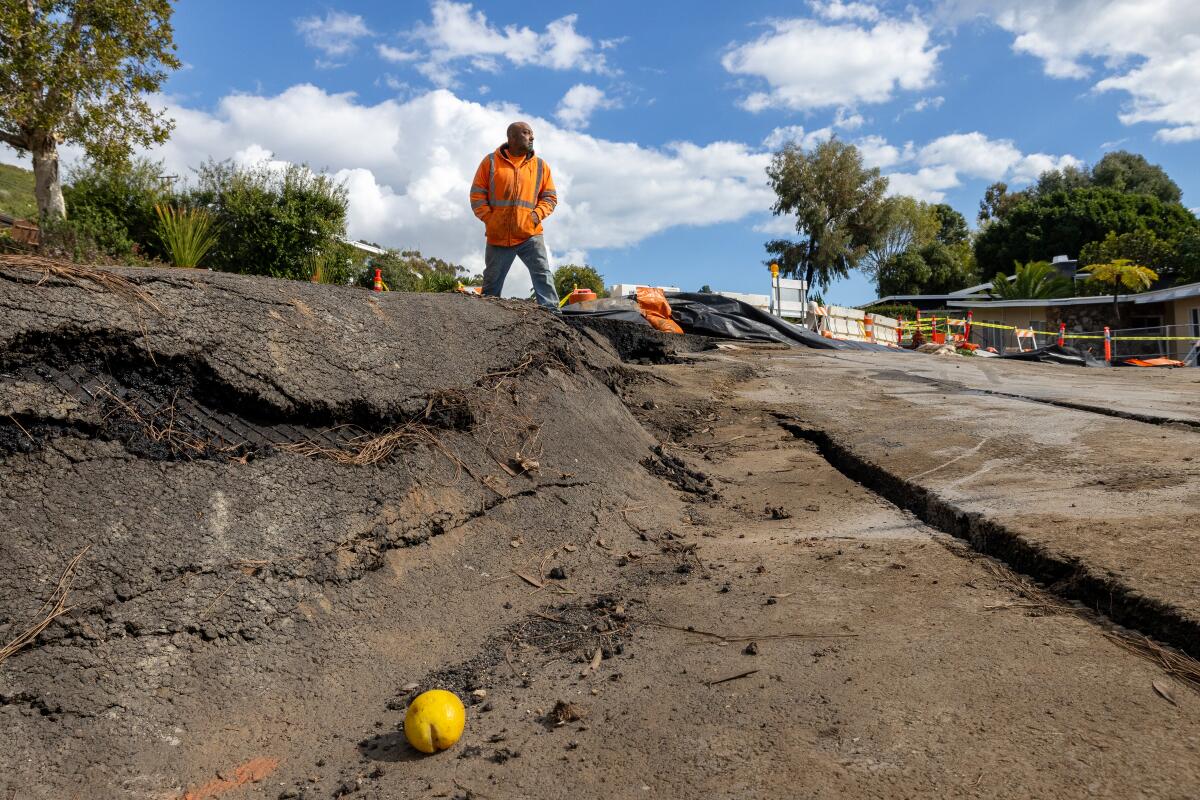
Two consecutive winters of heavy rains have also brought an escalation of the slow-moving landslides that are leaving growing cracks in homes and roads in Rancho Palos Verdes. As Grace Toohey reports for The Times, the area with landslide movement now covers about a square mile, and the rate of movement has accelerated in recent months. City officials are now seeking an emergency declaration from the state. And L.A. County Supervisor Janice Hahn has urged Gov. Gavin Newsom to visit the area and see the damage. For more on the heavy rains affecting Southern California this week, check out the latest coverage from Times reporters Harriet Ryan and Rosanna Xia.
The downpours earlier this month flooded tiny homes in a gated village for unhoused people in Sun Valley. Times columnist Erika D. Smith spoke with resident James Valdez, who ended up knee deep in floodwater when he tried to reach his door. Most of the village’s 140 or so residents had to be evacuated to shelters. Smith wrote that “with a future certain to be filled with extreme weather, the experiences of Valdez raise questions about how climate change could put new pressures on the efforts to solve homelessness in Los Angeles.”
POLITICAL CLIMATE
In an election-year concession to carmakers and labor unions, President Biden is planning to weaken the timeline for transitioning the U.S. to electric cars, Coral Davenport reports for the New York Times. This change involves relaxing limits on tailpipe emissions that are designed to get Americans to switch from gas-powered cars to electric vehicles.
How might races in the primary election affect local responses to the climate crisis? Safi Nazzal of the Los Angeles Times dug into some of the climate questions, including housing and transportation, surrounding L.A.’s races for City Council and the county Board of Supervisors. Don’t forget to check out the accompanying video where Safi’s puppet creation, sheep reporter Judeh, explains it all in entertaining fashion.
AROUND THE WEST
The Federal Energy Regulatory Commission has denied permits for multiple pumped storage hydropower projects on the Navajo Nation, saying it will no longer approve energy projects on tribal land without tribal approval. The commission’s adoption of this new policy is something that tribes have been calling for, as Noel Lyn Smith and Wyatt Myskow report for Inside Climate News.
The Biden administration announced last week that it brokered an agreement between tribes and farmers in the Klamath River Basin in California and Oregon. The deal is a memorandum of understanding between three tribes, the Klamath Water Users Assn. and the Interior Department, and it includes $72 million for river restoration work and upgrades to agricultural infrastructure. Kurtis Alexander covered the announcement for the San Francisco Chronicle. Jennifer Yachnin wrote about the deal for E&E News, saying Interior Department officials described it as an armistice in the battle between farmers who rely on the river’s water and tribal nations seeking to restore its fisheries.
The work of removing dams on the Klamath River is continuing, and the draining of reservoirs is exposing lands that have been underwater for many years. Debra Utacia Krol of the Arizona Republic wrote about the latest changes as silt-filled water has flowed downriver. She wrote that tribes, environmentalists and their allies are celebrating the shrinking waters “as an essential next step in what they say will be a decades-long process” of restoring the Klamath watershed, and one of the West’s largest salmon fisheries, to health.
THE ENERGY TRANSITION

Sales of electric vehicles dropped significantly in the second half of 2023, the first such decline in more than a decade, although sales for the full year rose from 2022. My colleague Russ Mitchell unpacked the reasons behind the slump in EV sales, and looked into the question of what this trend might mean for California’s efforts to meet its climate goals, including a pledge to ban the sale of new gasoline- and diesel-powered cars and light trucks by 2035.
Assemblymember Laura Friedman (D-Glendale) has introduced a bill that would require the California Public Utilities Commission to revisit its decision on slashing incentives for rooftop solar. Ryan Kennedy reports for pv magazine on the legislation, which would require the commission to consider the total benefits of rooftop solar, including improvements to local air quality, when determining how much solar users would be paid for electricity sold to the power grid. This comes as more than 60 organizations submitted letters to Newsom, state legislators and the commission urging them to “take immediate action to restore California’s rooftop solar growth.”
ONE MORE THING
If you’re curious to learn more about Dos Rios Ranch Preserve near Modesto, you’ll soon be able to visit. The date of the opening for the new state park hasn’t been announced yet, but the word from California State Parks is that it will be sometime this spring.
Once the park opens, I’m looking forward to going back and walking the trails along the restored floodplain.
This is the latest edition of Boiling Point, an email newsletter about climate change and the environment in California and the American West. You can sign up for Boiling Point here. And for more climate and environment news, follow @ByIanJames and @Sammy_Roth on X.
Toward a more sustainable California
Get Boiling Point, our newsletter exploring climate change, energy and the environment, and become part of the conversation — and the solution.
You may occasionally receive promotional content from the Los Angeles Times.




